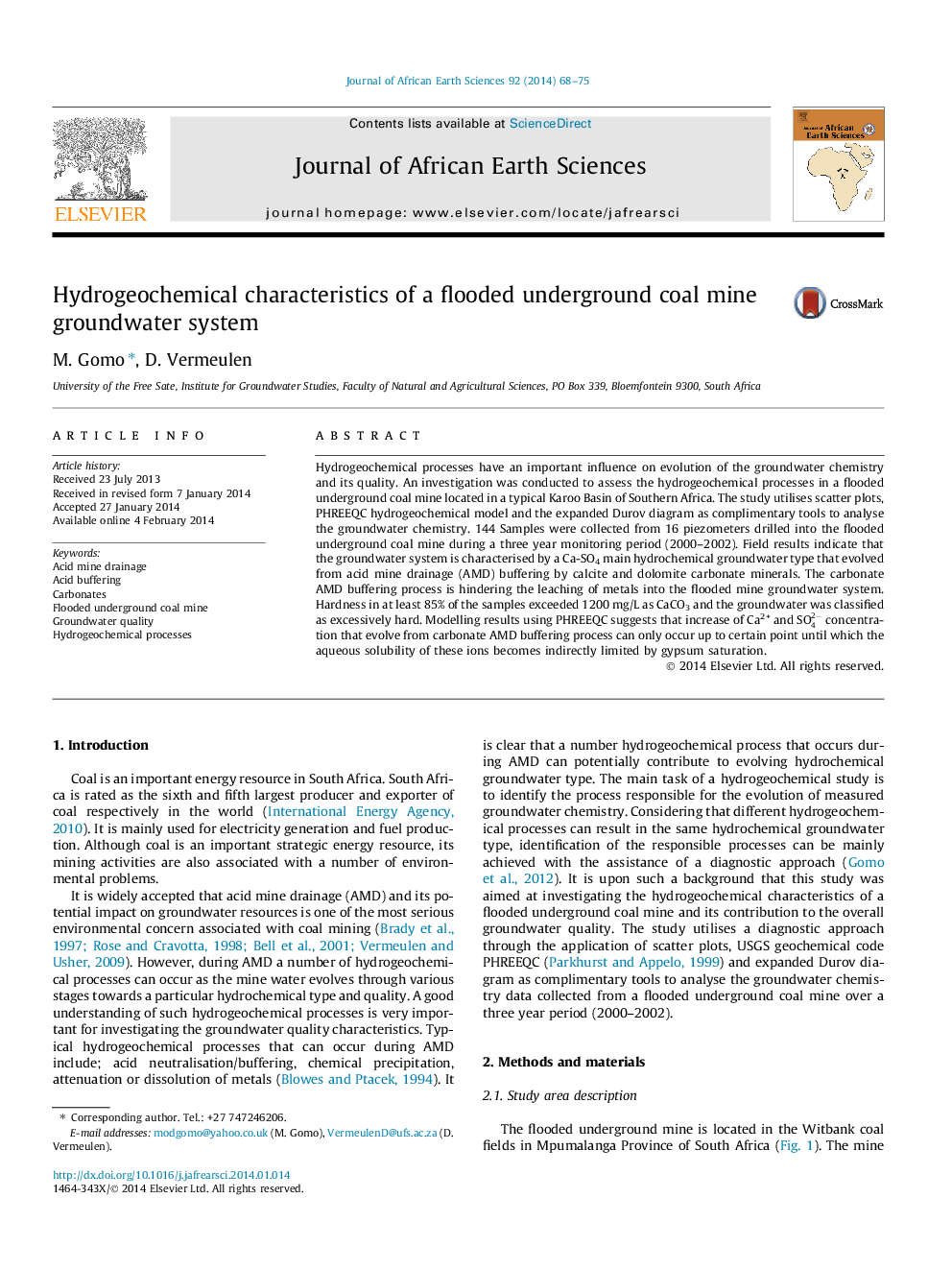| Article ID | Journal | Published Year | Pages | File Type |
|---|---|---|---|---|
| 4728887 | Journal of African Earth Sciences | 2014 | 8 Pages |
•We investigated hydrogeochemical characteristics in flooded underground coal mine.•Study utilises scatter plots and PHREEQC hydrogeochemical model.•Identified Ca-SO4 as the main hydrochemical groundwater type.•Groundwater type evolve from carbonate acid mine drainage (AMD) buffering process.
Hydrogeochemical processes have an important influence on evolution of the groundwater chemistry and its quality. An investigation was conducted to assess the hydrogeochemical processes in a flooded underground coal mine located in a typical Karoo Basin of Southern Africa. The study utilises scatter plots, PHREEQC hydrogeochemical model and the expanded Durov diagram as complimentary tools to analyse the groundwater chemistry. 144 Samples were collected from 16 piezometers drilled into the flooded underground coal mine during a three year monitoring period (2000–2002). Field results indicate that the groundwater system is characterised by a Ca-SO4 main hydrochemical groundwater type that evolved from acid mine drainage (AMD) buffering by calcite and dolomite carbonate minerals. The carbonate AMD buffering process is hindering the leaching of metals into the flooded mine groundwater system. Hardness in at least 85% of the samples exceeded 1200 mg/L as CaCO3 and the groundwater was classified as excessively hard. Modelling results using PHREEQC suggests that increase of Ca2+ and SO42- concentration that evolve from carbonate AMD buffering process can only occur up to certain point until which the aqueous solubility of these ions becomes indirectly limited by gypsum saturation.
